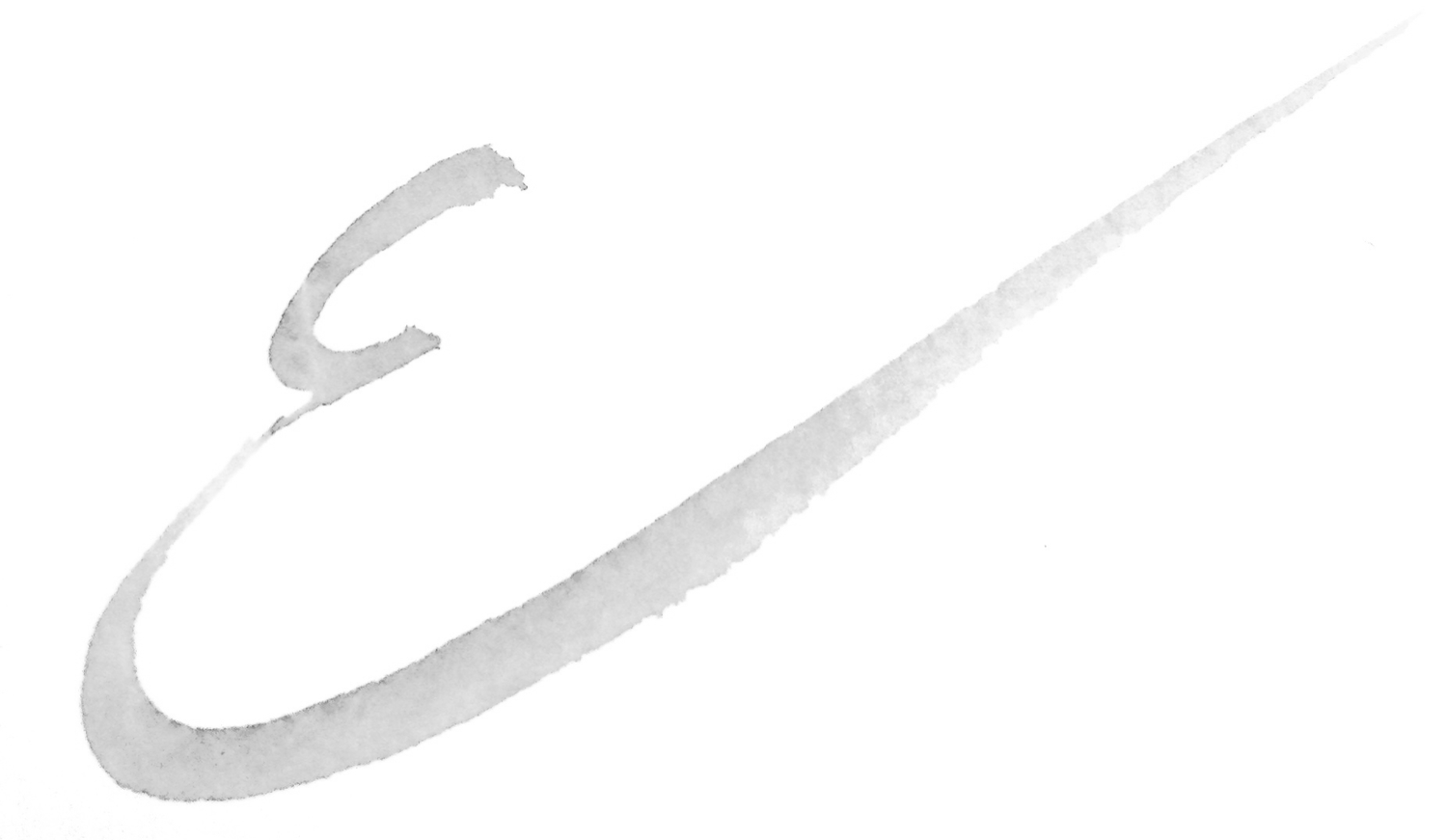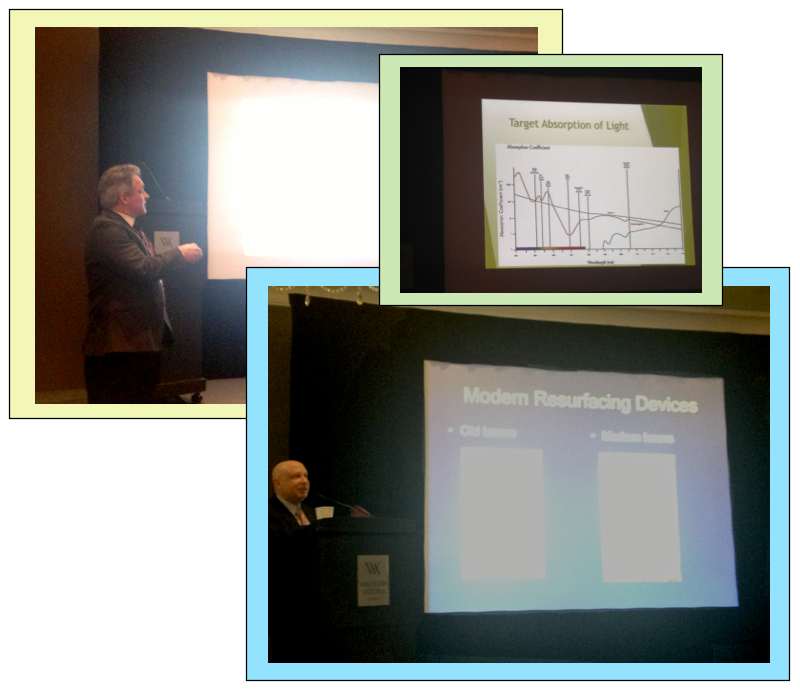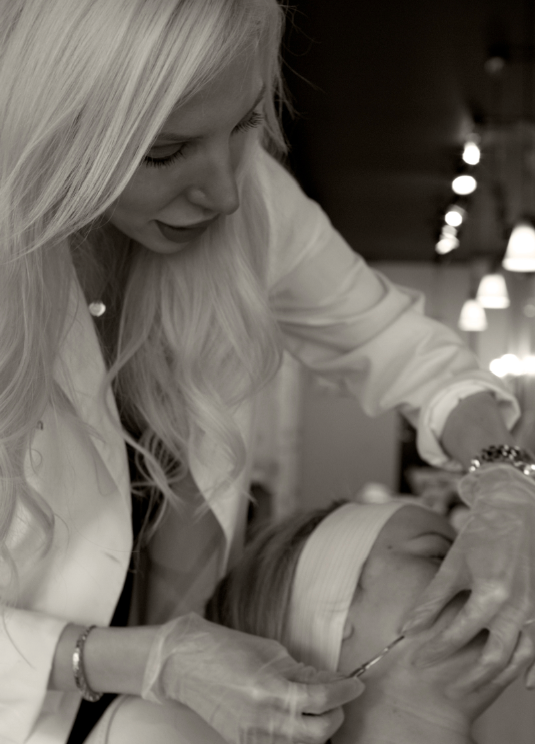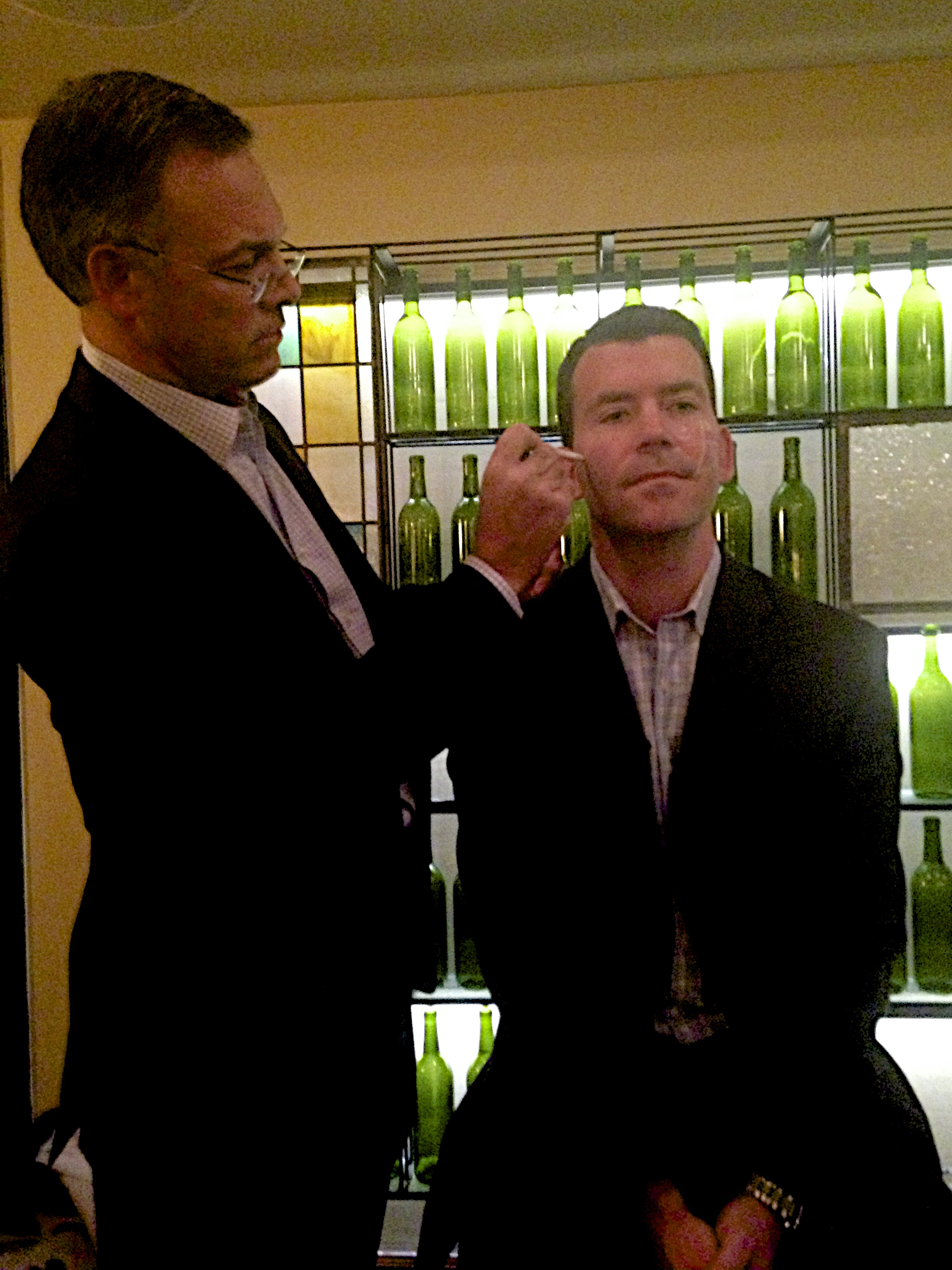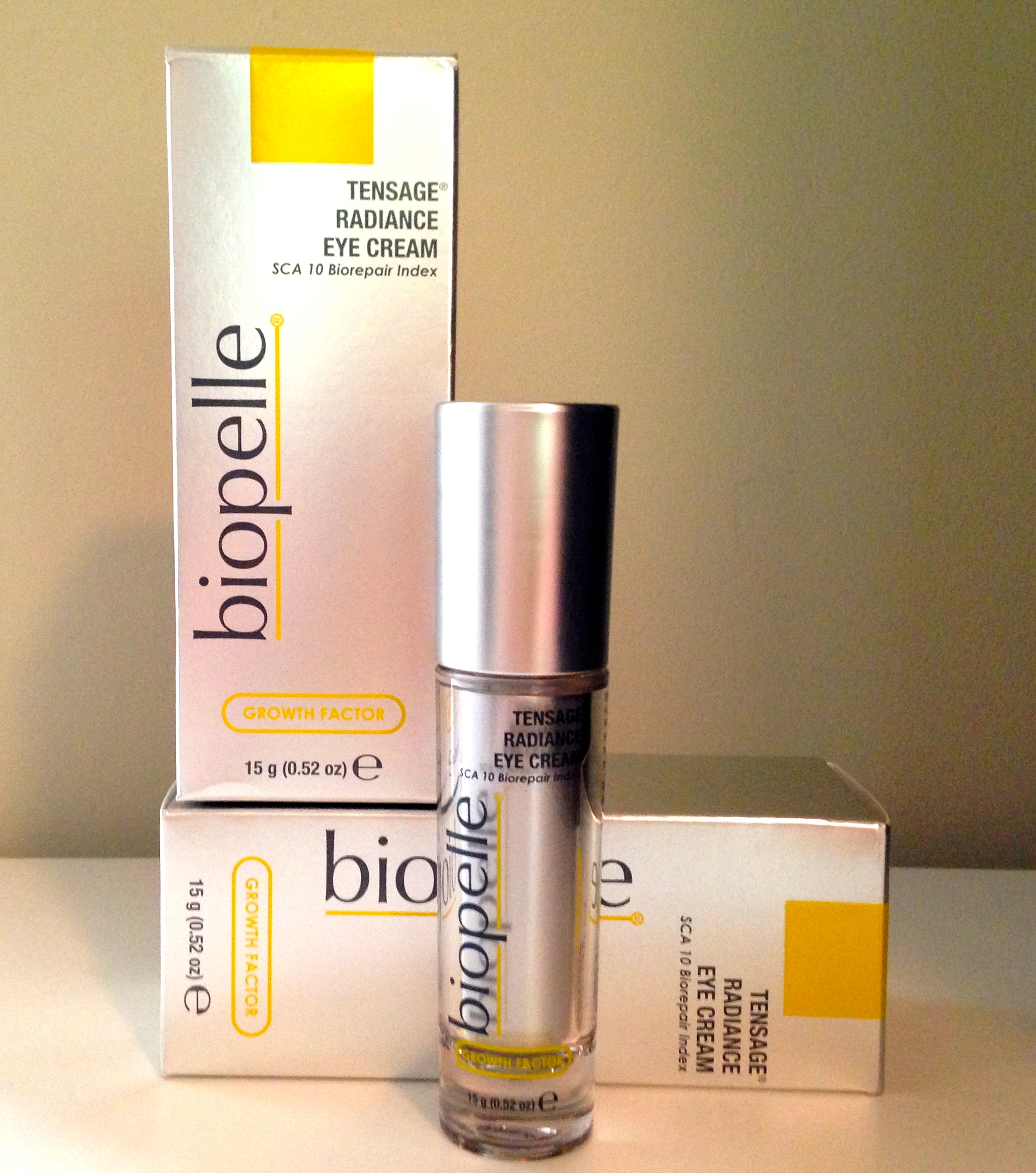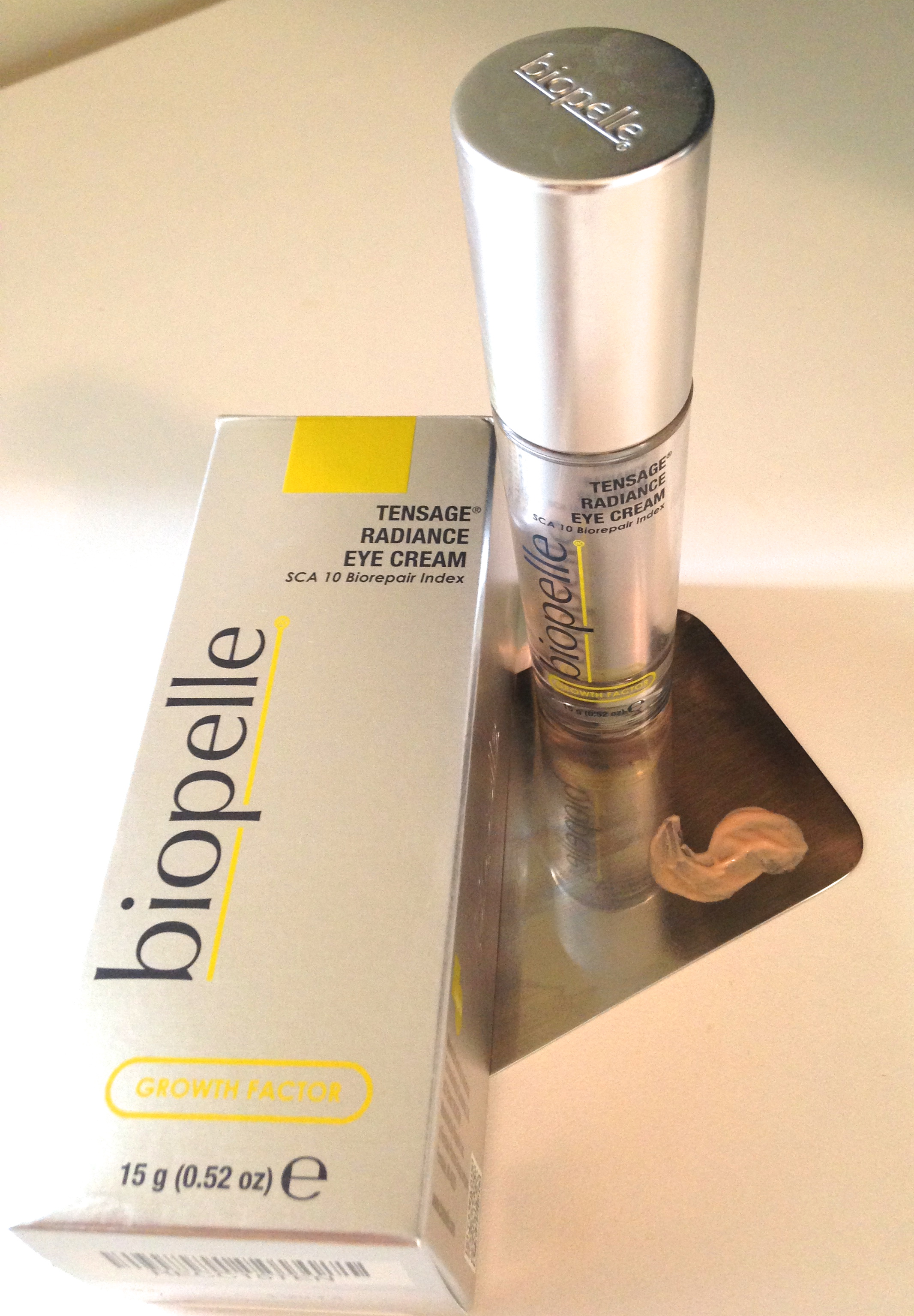Here's a blog post I wrote for work, Erickson Cosmetic Dermatology. Enjoy! =)
E Experiments: The Light Sheer Laser
I had the honor of experimenting with the Lumenis Duet LightSheer Diode Laser this week at my office, Erickson Dermatology. This nifty laser has a handpiece that gently suctions the skin as the laser is engaged. This makes things less painful (I would say pain free, almost!) for the patient during laser hair removal/reduction treatments- total win. The spot size is humongous too, so treating a large area is a snap. Less stress on the practitioner, less stress on the patient: what's not to love?
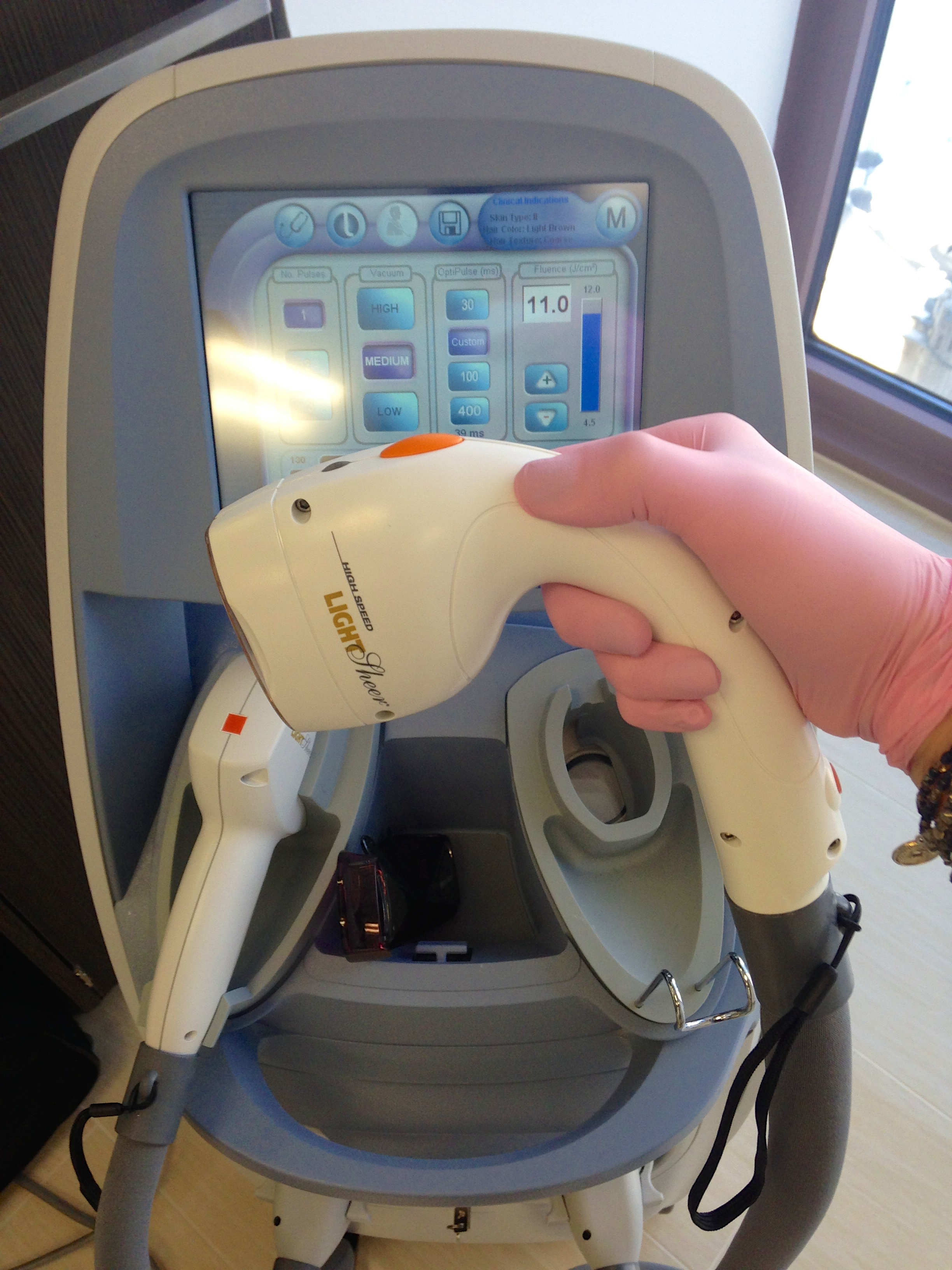 Just thought I'd share what I'm up to!
Until next time: Stay Fabulous, My friends!
Just thought I'd share what I'm up to!
Until next time: Stay Fabulous, My friends!
Sciton's Superior Science: Aesthetic Laser Symposium
Speakers Jason Pozner, MD, FAC and Stanley J. Kovak, MD just schooled all of Chicago (and surrounds) last weekend on Combo treatments with amazing Sciton laser technologies at the Waldorf Astoria. Sciton (as I'm learning over time) has awesome, advanced, and highly-customizable phototherapies for many different aging and sun-damaged skin types. These lasers are complex, and behind the scenes you would hear that they aren't for the beginner laser practitioner. Even with as much experience as I have doing laser treatments, I'm learning a lot (well, a TON) and am enjoying every minute!! The results are significant- and I'm looking forward to learning more every day under the direction of my physician. YEAH!
- Achieving superior results with combination procedures
- Advanced phototherapy and skin tightening for aging and sun damaged skin
- Resurfacing Perfected
Thanks Sciton, Dr Pozner, and Dr Kovak! I learned a ton!
Until next time: Stay Fabulous, My Friends!
Playing With MicroLaserPeel
Not too long ago, I had the opportunity to experiment with Sciton's Profractional Laser Technology, Sciton's BBL, and Sciton's MicroLaserPeel treatment. I was pretty excited about the versatility of the MicroLaserPeel. This resurfacing laser treatment is fully customizable, and can fall anywhere in social downtime (ie, pinkness/sensitivity afterwards) between a REALLY effective microdermabrasion and a huge, intense laser treatment. Here's what can be treated with MicroLaserPeel:
• Wrinkles and Skin Texture
• Scars
• Keratosis
• Sun damage (including freckles)
• Pigment irregularities
Almost any skin areas can be treated, but the most popular treatment areas are the face, neck, chest and hands.
MicroLaserPeel (also sometimes called a NanoPeel, or a Weekend Peel) is an erbium laser treatment that removes a thin layer of damaged skin to improve texture and provide a more youthful appearance. It's pretty great because it can be administered with great precision of depth, like if you only have one afternoon for social-downtime. The procedure is performed in your physician’s office and is pretty great because it can be custom tailored to your specific skin concerns, and most importantly: How much time you have to spare for social downtime. That, and it can be combined with other laser procedures at the same visit to maximize your results.
The depth is measured in microns, so a 10 Micron laser Peel is much lighter than a 20, which would require some social downtime. Here's how you could look at it: A series of microdermabrasions (like maybe 6 treatments) can equal one treatment of a 10 micron MicroLaserPeel.
Here's a great video of a demonstration.You'll see the MicroLaserPeel’s beam being scanned over a treatment area to remove the very thin layer of the skin. As the skin heals, fresh cells grow and resurface the treated area. The result is healthier-looking skin, often with reduced wrinkles and improved tone. Patients often say that it looks like their skin went from looking 'tired' to fab.
Here's the same day before and after pictures of my hand after (from top to bottom) a 4 Micron Peel, an 8 Micron Peel, and a 10 Micron Peel. (translation: Super-Light to Light)
 I felt totally fine (no discomfort AT ALL), and the texture on my left hand actually looked and felt smoother and healthier than the right hand, almost right away. I was surprised how audible the laser sound was, and how comfortable it was. I really didn't feel much at all! Can't wait to offer this treatment to our patients, I think they'll love it!
I felt totally fine (no discomfort AT ALL), and the texture on my left hand actually looked and felt smoother and healthier than the right hand, almost right away. I was surprised how audible the laser sound was, and how comfortable it was. I really didn't feel much at all! Can't wait to offer this treatment to our patients, I think they'll love it!
Until Next time: Stay fabulous My Friends!
Dermaplaning: Don't be Scared
Ever thought Dermaplaning looked scary-as-heck? You're not alone! What is it?? Also known as epidermal leveling, Dermaplaning is an expert technique which gently removes superficial, rough skin with the use of a modified surgical utensil (that's the nice way to say SCALPEL). This specialized treatment leaves the skin glowing and refreshed. Here's the secret: No, it doesn't hurt! AND, it's actually more gentle (and effective at removing superficial, dead/damaged tissue) than lots of other aesthetic treatments.
Here's me performing a dermaplane:
Who is it good for? Dermaplaning is safe for almost all skin types. It's not so great for really active acne or for people with really thick hair growth on the face. It's actually a great alternative to microdermabrasion: much more gentle and much more effective at removing stratum corneum!!! Ok, people also love it because it removes peach-fuzz. For those of you who love that part, I mentioned it! Are you happy?? =)
DP treatments result in a more refined, smooth, “glowing” appearance. Because Dermaplaning does not require the use of chemicals to exfoliate, it is often appropriate for those with certain skin allergies or sensitivities, even rosacea... no kidding!
What to Expect: Dermaplaning is actually a no-downtime, gentle refinement. You might expect your at-home products to absorb more quickly than usual, and your makeup to go on more smoothly than usual. (so use caution if you are using strong exfoliants or harsher products!) If it is determined to be appropriate for your skin, a mild chemical peel, cryogen therapy, or a masque treatment may be applied during your treatment. It's sort of like a choose-your-own adventure book. Remember those? If you do, you might look into dermaplaning for it's anti-aging benefits. (That was supposed to be funny!!)
Locally, I enjoy teaching other professionals to dermaplane. This comfortable treatment is a patient-favorite and a specialty of our office, and may be a specialty of an office near you soon!! =)
 Until next time, stay fabulous my friends!
Until next time, stay fabulous my friends!
E
Dr. Mauricio De Maio: The creme de la creme in Chicago
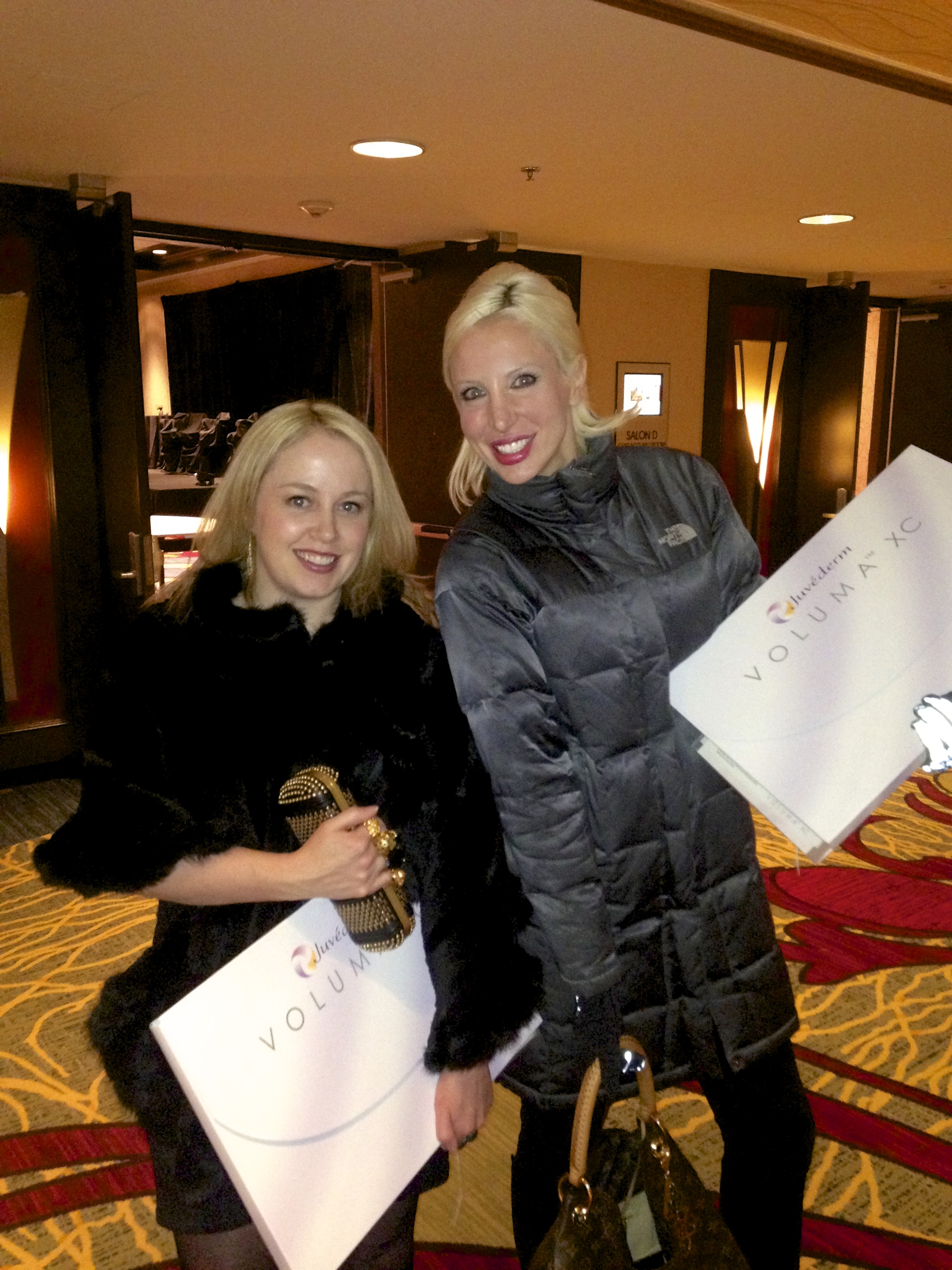 My boss, Chicago Dermatologist Dr. Quenby Erickson and I attended Allergan's Master Class led by world-renown Brazilian Plastic Surgeon Dr Mauricio De Maio last night in Chicago. He is an intriguing speaker, the BEST, actually!
My boss, Chicago Dermatologist Dr. Quenby Erickson and I attended Allergan's Master Class led by world-renown Brazilian Plastic Surgeon Dr Mauricio De Maio last night in Chicago. He is an intriguing speaker, the BEST, actually!
He demonstrated his incredible injection techniques, and showed how he uses Juvederm VOLUMA XC to restore lost volume in different severities of volume loss and laxity. He shared his amazing perspective on genetic aging, lots of advanced facial anatomy, and even told a couple good jokes for some of the most well-known physicians in the midwest. Can't wait to get back to the office and share everything I learned, especially about VOLUMA XC!
Until Next time, Stay Fabulous My Friends!
Juvederm Voluma... In all the right places
So far in my life, I have consistently been trying to rid myself of "volume". Always trying to stay fit began early on in life, even as a pre-teen when my friends alerted me to the whole pressure-to-be-thin thing, something that many women experience. I'm sure this is a historical and formative part of life for many out there early on. Like me, I think many become surprised when they begin aging, and realize that Volume in SOME places is just about the best thing since sliced bread. There is a funny quote that resonated with me when I first heard it long ago... This quote refers to a lack of fat, and the impact that loss of volume has on the face. It has been attributed to the French actress Catherine Deneuve, who allegedly said, "After a certain age, you have to choose between your fanny and your face."
Well, if Catherine was around now, she would certainly see the value in VOLUMA, which replaces some of that volume loss with HA, a water-loving material that restores youthful contours... all while you stay low-fat, you fitness buff!
What's VOLUMA? Click here for one of my Blog posts on it, or here to go to their official site.
 Anyway, I was excited to attend the Allergan Juvederm VOLUMA roundtable dinner in Chicago last week, where we learned more about where to place this (first and only) FDA-approved filler for correcting age-related volume loss in the mid face.
Anyway, I was excited to attend the Allergan Juvederm VOLUMA roundtable dinner in Chicago last week, where we learned more about where to place this (first and only) FDA-approved filler for correcting age-related volume loss in the mid face.
Dr James Platis of Chicago presented, and demonstrated just where to place the VOLUMA for the best results. Here he is, mapping it out for us on his gracious and patient demo model.
Until next time, stay Fabulous my friends!
The Chicken, the Egg, and The Changing Aesthetic Landscape
 As I write, I am here in San Francisco at the The Aesthetic Academy meetings. Yesterday I took the Certified Aesthetic Consultant Exam and should have my results in 2-3 weeks. (Keep your finger crossed for me!) And now that the hard work is over, I can take a deep breath, sit back, and learn.
A handful of the nation’s top aesthetic physicians are here presenting their favorite technologies for non-surgical rejuvenation, fat reduction and anti-aging. I'm noting a continuous theme with every. single. presentation.
As I write, I am here in San Francisco at the The Aesthetic Academy meetings. Yesterday I took the Certified Aesthetic Consultant Exam and should have my results in 2-3 weeks. (Keep your finger crossed for me!) And now that the hard work is over, I can take a deep breath, sit back, and learn.
A handful of the nation’s top aesthetic physicians are here presenting their favorite technologies for non-surgical rejuvenation, fat reduction and anti-aging. I'm noting a continuous theme with every. single. presentation.
The theme: the industry landscape is changing. For example: in 1997 (and maybe even 2007) a person might go to a doctor, have a surgery, and ride off into the sunset. These days, informed consumers are seeking more progressive solutions with little or no downtime. They have high expectations, plenty of options, and do lots of research. They aren’t jumping into invasive surgeries. In fact, according to ASAPS, the surgical segment of our industry is only experiencing growth of 3% each year, whereas non-surgical procedures are growing over 10% each year. As I listen, I agree… as a Service Provider, a Practice Manager, and as a patient myself. People want procedures that are better, faster, and easier to recover from.
From my perspective, I see these savvy, well-informed patients demanding these advancements. And I also see (especially at the industry conferences) that the technology is getting better. But I wonder: is the technology getting better because the market demands it? Or are people starting to access these treatments because the new, effective, non-invasive options are finally available? Which came first? The chicken or the egg?
Whichever scenario is happening, the technology is getting better. Science is looking to affect the skin/tissues on a molecular level. We are hearing more and more about changing 'the behavior' of the tissue. I even heard the phrase “reprogramming genes like software”. Indeed, genes are kind of like little strings of data, not unlike software. Heating, cooling, and using all types of energies to manipulate, denature, and contract are becoming the methods of choice for patients AND practitioners. Very interesting. So while plenty of facelifts are still happening, it sounds like the future of medicine is going 'molecular'.
 Here are the buzz-worthy, popular topics for non-surgical and non-invasive technologies here at the show:
Here are the buzz-worthy, popular topics for non-surgical and non-invasive technologies here at the show:
- Microneedling
- Diodes
- RF Devices (radiofrequency, now with less treatments)
- Enzymes, Stem Cells in Skin Care
- IPL, Photo Facial (oldie but a goodie)
- Circumferential Reduction, (Body Contouring and Fat Reduction)
- (Still trying for a great) Skin Tightening modality
- Cellulite Treatments (still nothing permanent, but looking good in the temporary-realm!)
- Micro-cannulas (for injecting soft tissue fillers like Juvederm)
- Voluma (the new filler from Allergan)
More to come from San Francisco!
In the meantime, Stay Fabulous, My Friends!
Alert, Alert!! New Obagi Medical Products System, available next week!!
My lovely Obagi representative just alerted me to a new Obagi Medical Products line, specifically designed for those in their 20's and 30's, but likely appropriate for anyone who may not want or need an Rx Tretinoin (or anything 'hardcore', per se). She didn't have any literature to send me yet, but referred me to the Youtube vid here... which, at the time that I viewed it, only had 63 views!! This is new, hot off the press!
http://www.youtube.com/watch?v=CjKvHbZAxf4
Obagi 360 features only 3 products: an exfoliating cleanser, a retinol .5 to use at night, and a hydrating broad-spectrum SPF. This line promises simplicity, gentle care, an emphasis on consistency and routine, and maintenance! Well done, Obagi... can't wait to hear more!!
Until next time, stay fabulous my friends!
December Lumenis Symposium: Because Chicago could use a little light(-based technology) in the winter... amiright?
I was honored to be learning about Lumenis' latest cosmetic light-based technology from (and with) some of the brightest minds in our field at tonight's Chicago Lumenis Symposium. Lumenis has been well known for it's IPL devices over the years, but just a few months ago they received FDA approval for their ResurFX: The New Fractional Non-Ablative technology for skin resurfacing. What the heck does that mean, you ask?
A quick generalized answer here: Non-Ablative means that the surface of the skin stays intact, and fractionated means collagen remodeling by only treating a FRACTION of the skin at a time (aka, little-to-no-downtime). WOO-HOO!
 Here I am with The Lumenis M22, (the R2-D2 looking unit which houses their famous ResurFX and IPL), alongside the well-known Aesthetic Consultant extraordinaire, Cindy Graf (aka, The Laser Queen!)
Here I am with The Lumenis M22, (the R2-D2 looking unit which houses their famous ResurFX and IPL), alongside the well-known Aesthetic Consultant extraordinaire, Cindy Graf (aka, The Laser Queen!)
Before and After: My Obagi Transformation
I think the Spring season gets a lot of credit for renewal and transformation, but Fall is really when I (and clients/patients alike) really get in the mood for change. The summer can be a time when we drop off of our strict regimens and become a bit lax... with schedules, eating, bedtime, skin care, and who-knows-what else. In my opinion, there seems to be something about the changing colors, the crispy air, and the earlier nightfall that seems to make us all think: 'OK, these summer freckles are bothering me. Time for a change', or 'Hey!! I'm suddenly interested in regimented self-care again'. I myself jumped back onto full time Obagi use a couple of weeks ago, and I thought I would share my slightly embarrassing before and after pictures from my first time using the Obagi Nu Derm system. (about 7 or 8 years ago)
I had some issues, as you can see. It's especially tough to have skin trouble when you are a professional aesthetician. After all, how are you supposed to recommend treatments and products for your practice's patients when your own skin is terrible??
Notice the acne, the post-inflammatory hyperpigmentation (red spots left-over from acne), melasma (patchy-brown above my lip and on my forehead), freckles, and uneven tone.
I used the Nu Derm system with tretinoin .1% (hardcore!!) religiously for 18 weeks, followed by a maintenance regimen. What a life-changing transformation this was for me! I am so thankful for this line, and have many, many happy clients who would agree.
So if you are in the mood for change yourself, join me in fall transformation! Start using that night-time product instead of falling asleep on the couch at night, jump into that Zumba class, or finally organize your closet by color; whatever blows your hair back! :)
Check out Obagi Medical's website here to learn more about nu derm, and until next time: Stay Fabulous My Friends!
Product Review: Tensage Radiance Eye Cream SCA 10
Word on the Street/Company Claims: Cryptomphalus Aspersa, a type of snail which has evolved to heal itself with it's own secreted Glycoproteins and growth factors, is the source for this concentrated anti-aging eye cream. SCA is used both for post-procedure (when you REALLY have to kick up the healing process) and to heal sun-damaged or aged skin in a daily home-care regimen. This particular product is a light/medium consistency slightly-tinted eye cream.
Biopelle's Website says this product:
- is tinted for a more even skin tone
- contains antioxidant and growth factor properties
- delivers a firming and tightening effect
- continuously hydrates the area around the eye
Those who are concerned with anti-aging or preventative maintenance, those who like a lighter consistency, & those who have uneven skin tone under their eyes.
NOT so good for:
Those with very, very crepey, very wrinkled, or SUPER excessively dry eye-areas. I don't believe that the light consistency would cut-it for these patients, and they may not desire the tint in the formulation.
Totally Fabuliz: (Favorite part):
My favorite part has got to be the tint- which I have to admit, I did not feel like I needed. I have very thin skin, but thankfully not much darkness or blue-ish tint from underlying vessels at all. Yet, I love it! The tint makes the whole area look more even and smooth, but isn't heavy or makeup-like in consistency.
Just OK: n/a! I love it.
Needs work: n/a!
Star Rating:
★★★★4 Stars: Pretty much deserves a Nobel Peace Prize, want it/need it/ have to have it!
Misc Notes/Other need-to-know's:
-This is Biopelle's most popular 'fly's off the shelf' product in the Tensage line. I can see why after using it!
-Check out my Post on Biopelle's Tensage SCA technology here
This product feels like it tightens and smoothes after just using it once, and who doesn't love a bit of instant gratification? With prolonged use (I'm using it twice a day), I'm seeing some brightening and hydration.
While I still love the technology behind the highly concentrated HUMAN growth factor in TNS Recovery Complex and TNS Essential Serum, this natural growth factor offers a different approach... with a fun-to-use, cosmetically elegant edge.
Well done AGAIN, little snails! We thank you!
STAR RATING KEY:
★1 Star: Might pass this one up
★★2 Stars: Okay for the money
★★★3 Stars: Really nice product, I’d buy it
★★★★4 Stars: Pretty much deserves a Nobel Peace Prize, want it/need it/ have to have it!
BOTOX for Babies: PART 2- Just give me the drugs, Doc!
Have you been nervous to try an injectable because of bruising or discomfort? Read on… There is a TOTAL laundry list of ways to avoid little bruises or lessen the slight (and temporary) discomfort from an injectable cosmetic treatment, but here is one of my tips based on my experiences in the office:
"Missed me, missed me, now you have to kiss me!" -your blood vessels
Even if you’re a Seasoned Injection Veteran who's not so concerned with discomfort, I believe you should ask for the topical anesthetic (if you’re not allergic or have other contraindications).
Why? Your doctor might use a topical anesthetic called LET (4% lidocaine, 1:2000 epinephrine, 0.5% tetracaine) which constricts blood vessels. This means that the blood vessels can kind of shrink up and there’s less of a chance of hitting them. I think it’s a win/win: less discomfort, and less of a chance of the dreaded bruise.
Now, this part is purely anecdotal, and just my opinion based on what I’ve personally seen in the office: but I think even topical anesthetic without the epinephrine can help prevent bruises. So, if your doctor’s office doesn’t use LET, I would still ask for the BLT (20% benzocaine, 6% lidocaine, 4% tetracaine) or similar. I haven’t read anywhere that these other compounded topicals are actually proven vaso-constrictors, but if you try it, let me know what you think! Hey, at least it won't hurt!
Your doc will likely have specific instructions for you, including post-care. Please note: this is post is simply meant to be fun and informative, *not the authority on your health* so please always follow your doctors instructions... and NOT what you read on the internet. (yes, this blog included!)
Keep in mind that there are always risks to every procedure, so chat it up with your physician to make sure these procedures are appropriate for you… Until Next time: Stay safe, and fabulous!
BOTOX gets a "NEW" use... wink wink
 Day before yesterday, (September 11 2013), the FDA made it official: BOTOX Cosmetic is now indicated for use in the lateral canthal lines, aka: crows feet. Why is no one losing their minds in celebration, you ask??
Day before yesterday, (September 11 2013), the FDA made it official: BOTOX Cosmetic is now indicated for use in the lateral canthal lines, aka: crows feet. Why is no one losing their minds in celebration, you ask??
Up until now, the only FDA indication for BOTOX Cosmetic in the face has been the glabellar lines (the 11's that can form between your brows). BUT, it is often AMAZING in many other places... including those crows feet! How do we know, you ask?
...So, don't tell anybody, (shhhhh!) but just about every physician or nurse who performs BOTOX Cosmetic treatments has totally already been doing this. It's considered 'off-label", (like you're off-roading from the original smooth highway of labeled directions/indications) but BOTOX is done frequently in many other areas.
Even so, Congrats, Botox! We're happy the FDA agrees with what we totally haven't already been doing for years.
**Let's all turn and wink knowingly at each other here, completely free from crows feet**
Fillers, without the ouch: Dermasculpt Cannulas
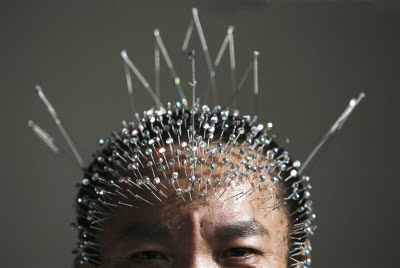 When a physician uses a blunt-tipped cannula to administer a soft-tissue filler like Juvederm, Radiesse, Restylane, Perlane or other, they are using a blunt-ended, usually flexible, straw-shaped tool to move around the area. This tool allows the injector to lay little threads of the filler product smoothly and evenly.
The key point here is that blunt-tipped micro cannulas are not sharp. When the filler is administered with one, the tissue is not pierced through or poked like it would with a ‘regular’ needle. The physician or nurse will be sliding the cannula in through a tiny pin-point opening that they create (in an inconspicuous place like the corners of the mouth). Then they'll thread/glide the cannula through the tissue, smoothly filling the area with the product. Additionally, they do not have to pierce through the surface skin multiple times like they would with a needle. This means less possibility of bruising for you!
When a physician uses a blunt-tipped cannula to administer a soft-tissue filler like Juvederm, Radiesse, Restylane, Perlane or other, they are using a blunt-ended, usually flexible, straw-shaped tool to move around the area. This tool allows the injector to lay little threads of the filler product smoothly and evenly.
The key point here is that blunt-tipped micro cannulas are not sharp. When the filler is administered with one, the tissue is not pierced through or poked like it would with a ‘regular’ needle. The physician or nurse will be sliding the cannula in through a tiny pin-point opening that they create (in an inconspicuous place like the corners of the mouth). Then they'll thread/glide the cannula through the tissue, smoothly filling the area with the product. Additionally, they do not have to pierce through the surface skin multiple times like they would with a needle. This means less possibility of bruising for you!
 It’s also less painful, and you'll typically end up with much less swelling. Here’s a great study from the American Society for Aesthetic Plastic Surgery, if you'd like to check that out. They did a 2 week comparison of post-injection 'downtime' of needles and micro-cannulas. They conclude that cannulas are the way to go!
It’s also less painful, and you'll typically end up with much less swelling. Here’s a great study from the American Society for Aesthetic Plastic Surgery, if you'd like to check that out. They did a 2 week comparison of post-injection 'downtime' of needles and micro-cannulas. They conclude that cannulas are the way to go!
l personally would describe the feeling as “weirdzies” versus “OUCH!!”. You can certainly feel something moving around, which is why I describe it more as a strange sensation, and not really a pain sensation. I've personally tried the Dermasculpt Cannula, which seems to be a great product. Dermasculpt cannulas have pretty much become the standard for soft-tissue filler treatment at Cadella Medical Spa and Wellness Center here in Chicago, so it's the brand I'm most familiar with.
Even though blunt-tipped cannulas are a fantastic way to have a soft-tissue filler injected, not all docs use them. They can be much more expensive than regular needles, and training is needed (there is a learning curve, as I understand). It's also important to know that even if they utilize cannulas for injections in their practice, sometimes an injector will choose to use a traditional needle. It can depend on the product being used, because some fillers are thicker or thinner than others. It also depends on and what the injector wants to do with it, and where they'd like to put it, so it won't be appropriate all the time. Chat it out with your injector to see if you're a good candidate for blunt tipped micro cannulas at your next treatment.
Check out my other post on Dermasculpt and uplift filler technique here, and until next time: stay fabulous my friends!
If Michelangelo was into aesthetic medicine, he'd do this...
Michelangelo Buonarroti is known to have described his sculpting as a process where he would 'release' a figure from the block of stone in which it slumbered. The masters of the Renaissance (and contemporary sculptors, too) would often create a model of their ideal figure first. Typically made out of clay, the artist would mold and manipulate the shapes to take form- and create something beautiful.
To me, this is not unlike the soft-tissue filler sculpting methods of today. Injectors will often use combinations of Artefill, Juvederm, Radiesse, Perlane, Belotaro, and/or Restylane to fill in areas that have lost facial volume due to age, injury, or medication/treatment. After the product is administered, they'll sometimes use their hands to manipulate the material and sculpt the filler inside the tissue, (no, it doesn't hurt!) since at this point, the fillers have a clay-like consistency. It absolutely makes me think of sculpting, like the masters of the Renaissance.
I've got soft-tissue fillers on my mind since the fabulous injectable event that I worked last night. We were SO busy, because once you've discovered who to go to for a gentle, natural liquid facelift -or- uplift injection, you don't need to look any farther. Dr. Eliza Parker in Chicago is that physician (and a sort of Michelangelo) for many people. She is a MASTER with the soft tissue filler sculpting techniques and the use of Dermasculpt blunt-tipped micro cannulas. She uses the Dermasculpt cannula instead of a traditional needle, and smoothly threads filler into the tissue. She'll do this as a part of her sculpting technique as her tool to restore lost volume and build a sort of scaffolding, which helps create a structure underneath any lax or sagging facial skin.
 If you were to watch her perform an uplift, you could see how she gently moves and sculpts the product to the exact place she wants it to create a very pretty and natural contour, gently lifting jowles and naso-labial folds (nose-to-mouth). Here is a video of Dr Pierone in Vero Beach FL performing an uplift. We were lucky enough to visit him in his office to observe his technique a couple years back. You may find it fascinating...
If you were to watch her perform an uplift, you could see how she gently moves and sculpts the product to the exact place she wants it to create a very pretty and natural contour, gently lifting jowles and naso-labial folds (nose-to-mouth). Here is a video of Dr Pierone in Vero Beach FL performing an uplift. We were lucky enough to visit him in his office to observe his technique a couple years back. You may find it fascinating...
If you’re in the Chicago-area, I would highly recommend seeing Dr. Eliza Parker for a consultation: her technique is total artistry. She even trains other medical professionals how inject with these special cannulas. Here's Dr Parker's website, so you can check it out!
 And if you happen to be in Florida, you could certainly give Dr Pierone a call. Dermasculpt seems to be having trouble with their physician-finder page as I write this, so if you're in any other of the 48 states... (sorry!) check back with them soon to find an MD in your area: Here's the Dermasculpt link for you, and until next time: stay fabulous, my friends!
And if you happen to be in Florida, you could certainly give Dr Pierone a call. Dermasculpt seems to be having trouble with their physician-finder page as I write this, so if you're in any other of the 48 states... (sorry!) check back with them soon to find an MD in your area: Here's the Dermasculpt link for you, and until next time: stay fabulous, my friends!
Botox: Making Mountains out of Molehills
I sometimes get some questions about the 'mole-hills' or little bumps that you get right after a BOTOX Cosmetic treatment. This is a very, very temporary occurrence (between 5-15 minutes usually) that some people tend to get anxious about or hung-up on. So, I thought I would post pictures of my own latest treatment in an effort to put some worries to rest.



 The reason these little temporary 'mole-hills' occur:
The reason these little temporary 'mole-hills' occur:
When the BOTOX Cosmetic arrives at an office, it is in concentrated, sort of freeze-dried or vacuum-dried form. There are 100 units in a typical bottle, but they need to be reconstituted to properly use them and measure them out. Saline is used to do this. The injector will determine how many units need to be injected into each area, and will inject the BOTOX Cosmetic, Diluted with saline, into the area. It takes your body a couple of minutes to absorb it, which is why the molehills occur. They are gone really quickly!
Despite how many questions we hear about this, this little side effect should probably the least of your concerns. Be sure that your injector is a physician or a nurse injector, and that they are using authentic BOTOX Cosmetic. You can even ask them to see the bottle, which has a hologram on it. There are sometimes little bruises (like just bigger than the size of a pin-point) that can occur, and we most typically see them around the eyes (crowsfeet). I didn't get any bruises this time, but every once in a while I will. Usually not a big deal at all!
Always do your homework, and you will be better off! Here's a full list of side-effects, and always discuss the risk vs benefit of any treatment with your doctor!
Enjoy your treatment and Bye Bye, Crinkle-Eye!
5 Things to AVOID after a Chemical Peel Treatment
 Despite some really awesome (in my opinion!) post-care instruction sheets, every once in a while we’ll get a phone call from a post-peel patient in distress. These clients, no matter how aesthetically-seasoned, occasionally forget the warnings of their providers, or maybe could have underestimated some post-peel sensitivity (maybe just a bit.) Here are 5 things to surely avoid that are sometimes forgotten in the days after a chemical peel:
(-and please always follow the instructions given to you by your skincare office-)
Despite some really awesome (in my opinion!) post-care instruction sheets, every once in a while we’ll get a phone call from a post-peel patient in distress. These clients, no matter how aesthetically-seasoned, occasionally forget the warnings of their providers, or maybe could have underestimated some post-peel sensitivity (maybe just a bit.) Here are 5 things to surely avoid that are sometimes forgotten in the days after a chemical peel:
(-and please always follow the instructions given to you by your skincare office-)
1) Over-moisturizing:
If you over-moisturize, you can make the peeling skin too soft, which can cause it to come off before it’s ready. This can leave the fresh, baby-like skin underneath exposed and possibly compromised. An additional disadvantage of over-moisturizing includes possibly s-l-o-w-i-n-g the peeling stage… and if you’ve ever had a peel, you know that nobody wants that!! Use just enough moisturizer to make you feel comfortable.
2) Hair-removal:
This includes laser-hair removal on any peeled area (you’ll want to follow your skin-care office’s specific instructions, but I wouldn’t treat someone with laser for at least 10-14 days). Waxing and shaving are also off-limits because they can remove the skin, so be sure to avoid both. If you have to, simply tweeze.
3) Picking!!:
This one is easier said than done FOR SURE. Its hard not to pick off any little flakes that might be staring back at you in the mirror. But, try to remember that the flakey dead statum-corneum is actually protecting skin that isn’t necessarily ready to be exposed yet. So, even though its annoying…hands off!
4) Excessive Sweating:
Depending on the strength of the treatment, some peels will cause the top layer of skin to get crispy or tight like a thin plastic-wrap… and this could trap sweat underneath the skin. A little bit usually doesn’t cause an issue, but if you visit your usual hot yoga class, you might end up looking like a freshly waxed car after a rain. Sweat gets trapped under the skin and forms little pockets that look just like those little beads of water… but these droplets don’t wipe off… Yikes!
If this happens, don’t panic- they only look alarming, and aren’t harmful. Give your skin care expert a call and ask how they recommend handling it.
5) Vacation-Related Activities:
You’ll want to avoid several activities that I like to classify under: ‘Things you’d likely do on Vacay’. These things include Sun Exposure, Swimming (keeping skin wet for extended periods of time AND Chlorine) and having treatments like Facials.- yes, even the ‘natural’ ones.
Remember that we want to treat the skin as if it’s very sensitive in the days after a peel, even if it feels or looks normal. Folllow your provider’s recommendations for post-care and continued treatments, and play it safe with products, sun, and picking, even if it’s tough. Your skin will thank you!!!
Here's a great link to a super-compliant, 5 Star non-picker friend who's documented her experience: check it out!
And always be sure to play by the rules for less irritation and great results from your exfoliation!
Happy Peeling!
